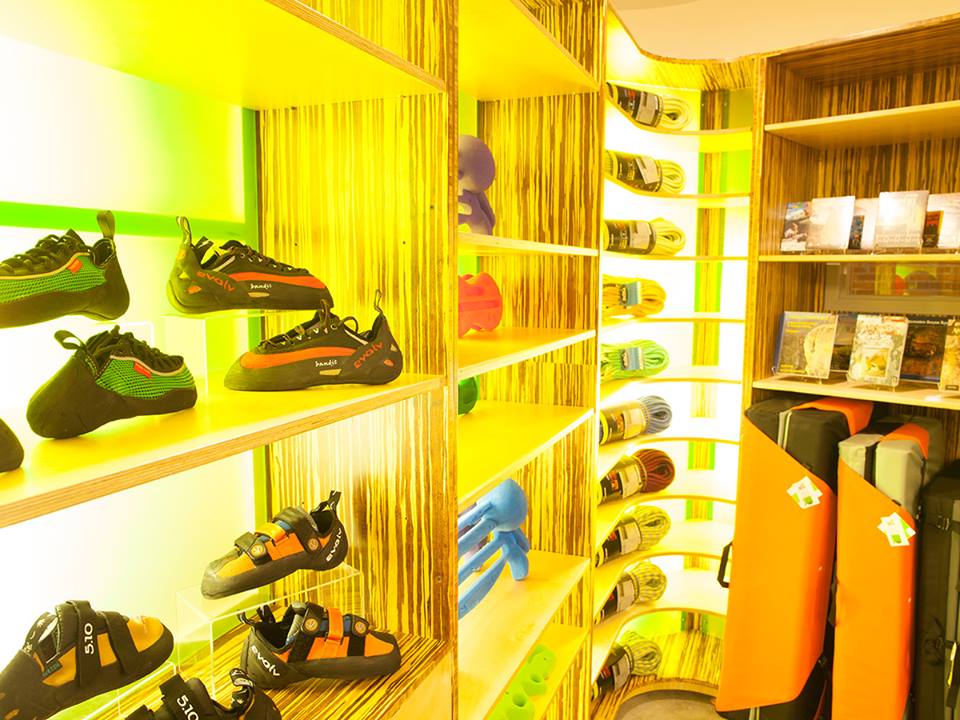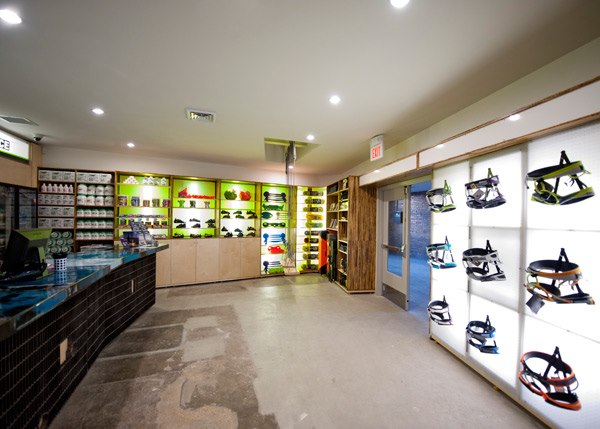
Providing a robust retail area inside your climbing gym may seem risky or a distraction from your core service offering. But if you don’t have at least some retail space you may be missing out on a consistent and highly profitable revenue stream.
In today’s climbing gym market it is not enough to throw some cams and chalk into a dusty glass case and wait. If you want to make the most out your inventory it needs to become a priority for you and your staff.
Retail can help bolster your bottom line by 30% or more, but the real benefit is to your members, by providing them a convenient and valuable service. It can do more than just help that line item revenue, it can help your reputation as a full-service facility that provides all the knowledge and gear that your climbing community needs.
Start by Giving Them What They Want
It may seem obvious but many climbing gyms still don’t understand their customers. To have a profitable retail shop you must have a complete understanding of who is coming in to your facility, what they need and what they want to buy.
When it comes to actual climbing gear, all too often gyms stock their shelves with crack climbing gear and ice axes. Yet that equipment often sits dusty behind the counter for far too long. To boost sales you need to tailor your merchandise to the needs of your community.
For instance, most modern facilities see a large percentage of new climbers. This group is most likely to purchase entry level gear models, both for the price but also for the comfort of board-lasted lace-up shoes and adjustable harnesses. If you also have a large community of more experienced climbers, you’ll need to complement your selection with a variety of aggressive shoes, sport harnesses and hang boards for at-home training. Depending on where you are in the country, you may want to carry guidebooks, crashpads and 70 meter ropes to suite your local (or not-so-local-but-popular) crags.
Stand in your customer’s shoes. Look beyond your personal preferences which will help to understand your customer’s full range of needs.
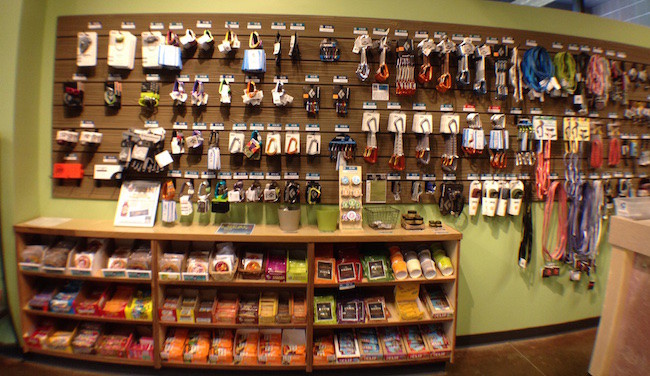
Be the Expert
Climbing gyms are speciality service providers and speciality retailers. Compared to your local big box retailer, which sells hundreds of brands that the sales staff know almost nothing about, your gym will carry a fractional amount of brands, but your staff should be the experts when it comes to climbing gear. This is your competitive advantage.
According to Dave Seehafer, an industry analyst for Global Wave Ventures, “Today’s specialty retailer needs to be considered the ‘expert’ of a particular sport or activity, the ‘epicenter’ for product information, knowledge, insight, trends, and new products,” he wrote in Transworld Business. Make sure that the employee that engages with the customers knows the ins and outs of every product you offer and who it suits best. Many outdoor gear vendors offer training tutorials for this very reason.
Being a speciality retailer also means that you should know about the latest and greatest gear on the market. Climbing gyms are small and adaptable enterprises that can make quick changes and additions to their retail line. Make sure you’re up on the newest gear by attending retailer shows like the annual OR Show, reading the latest gear reviews and checking out vendor websites.
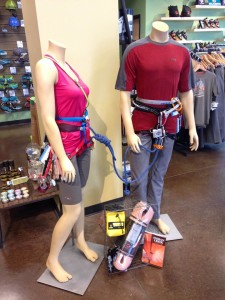
Sell Packages
You can increase sales by bundling multiple items that are often purchased together. Seehafer recommends, “Your window displays should highlight ‘packages’ — items that are used together in some realistic, understandable way.” For example, a new climber package could include a fully adjustable harness, comfy flat climbing shoes, chalk bag and chalk. (Waiving your member initiation fee when customers purchase this package is also a great way to get new customers hooked.)
Climbers looking to get outside for the first time will need a full set of draws, a rope, rope bag and perhaps a belay device. These items will sell better if they are priced as a single unit and marketed as the essential sport-climbing kit. If you’re one of the many facilities that also offers yoga, you’ll want to cater to new yogis that want their own yoga matt and yoga towel.
Beginners aren’t the only user group for retail packages. How about a crashpad and chalk bucket bundle? Drink and bar combo. Anchor building kit. Or the ultimate gym-pride package with a shirt, water bottle and sticker featuring your gym’s branding.
Don’t Forget the Forgettables
A member just entered your gym after a stressful day and is frustrated they forgot to pack earbuds for their evening elliptical session. No worries, you have them stocked at the retail counter. A yoga attendee arrives for power yoga without their towel. Again you’ve got them covered with a variety of options in your retail area.
Having a bevy of products that are typically forgotten by members not only provides a great service but helps you diversify your revenue. Other common items climbers may forget are:
- Bath and sweat towels
- Nail clippers
- Athletic Tape
- Magazines
- Locks
- Hair ties
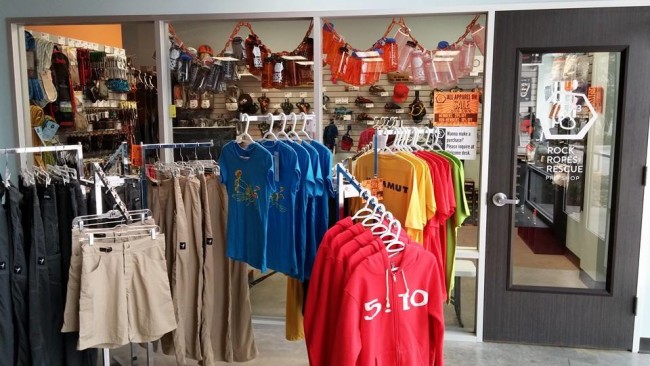
Consumbables
Everybody needs to eat, but not everybody remembers to bring a snack to the gym. That’s where items like bars, sport and energy drinks, fruit, even jerky, candy and cookies come into play. These can be impulse buys or planned meal replacements which members often appreciate and are willing to purchase to keep themselves fueled. Don’t forget the gum and mints so climbers will feel fresh after they munch.
Depending on what other food options are nearby, you may even consider offering complete meals like prepared sandwiches or wraps, especially if you can partner with a local company. Non-perishable items like instant soups or noodle bowls may be a good option if customers have access to a microwave.
Vending machines may be a good option for these types of products. Vending machines are resistant to loss by theft and don’t require any staff to complete the sale. The most effective way to have vending machines in your gym is leasing from a service that charges a flat fee and lets you keep the income from the machines. You pay for a monthly lease and the servicing and the vending company does restocking. However, machines may not fit into the aesthetic that you wish to provide and with a vending contract it’s virtually impossible to stock them with local products.
No matter what types of food and drink you offer, they can add a significant bump to your daily sales figures.
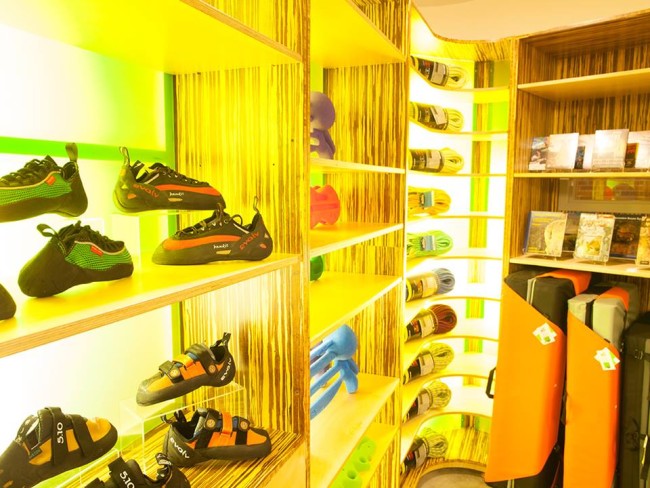

Climbing Business Journal is an independent news outlet dedicated to covering the indoor climbing industry. Here you will find the latest coverage of climbing industry news, gym developments, industry best practices, risk management, climbing competitions, youth coaching and routesetting. Have an article idea? CBJ loves to hear from readers like you!




